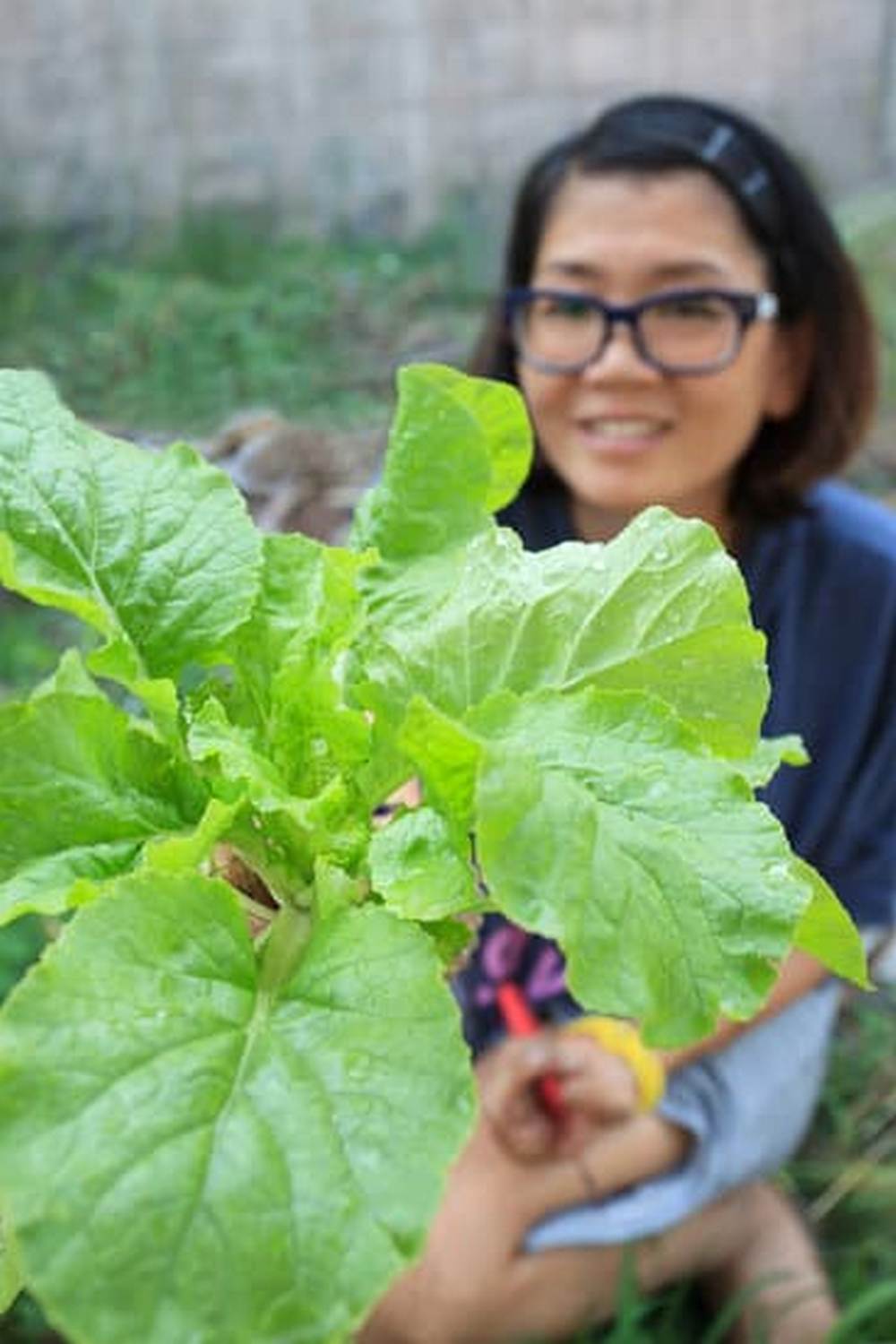Raised bed gardening is a popular and effective method for growing vegetables, providing numerous benefits and opportunities for successful harvests. With the right techniques and strategies, you can create a thriving vegetable garden in raised beds that will yield bountiful crops throughout the season.
In this article, we will explore essential tips and guidelines to help you maximize the potential of raised bed gardening for your vegetable plants, focusing on choosing the right location, selecting suitable vegetables, building your raised bed garden, soil preparation, watering and fertilizing strategies, pest management, harvesting, and more.
One key aspect of raised bed gardening is the ability to control the environment in which your vegetables grow. By elevating the planting area above ground level, you can customize the soil composition, drainage system, sunlight exposure, and accessibility to suit the specific needs of your plants.
Whether you are dealing with poor soil quality or limited garden space, raised beds offer a practical solution for achieving optimal growing conditions for a variety of vegetable crops. With proper planning and execution, you can create a productive and sustainable garden that produces healthy and delicious vegetables all season long.
When it comes to selecting the best vegetables for raised bed gardening, there are several factors to consider such as plant size, root depth, growth habits, and compatibility with other crops. By choosing varieties that are well-suited to raised beds and complement each other in terms of nutrient requirements and growing conditions, you can ensure successful growth and abundant harvests.
From leafy greens and root vegetables to vine plants and fruiting crops, there is a wide range of options available for raised bed gardens. With the right combination of vegetables and careful planning, you can create a diverse and productive garden that meets your culinary needs and gardening preferences.
Benefits of Raised Bed Gardening for Growing Vegetables
Raised bed gardening offers numerous benefits for growing vegetables, making it a popular choice among gardening enthusiasts. One of the primary advantages of raised bed gardening is improved soil quality. By using a raised bed, you have more control over the soil composition, drainage, and overall health of the garden. This results in healthier plants with higher yields compared to traditional in-ground gardens. Additionally, raised beds can provide better aeration for plant roots, leading to increased growth and productivity.
Another benefit of raised bed gardening for growing vegetables is the reduced risk of weeds taking over your garden. Since the planting area is contained within the raised bed, it is easier to spot and remove any weeds that do appear. This saves you time and effort in maintaining your garden while also preventing weeds from competing with your vegetable plants for nutrients and water.
In addition to soil quality and weed control, raised bed gardening can also extend your growing season. The elevated design of raised beds allows the soil to warm up faster in the spring, providing an earlier start for planting vegetables. This can be especially beneficial for cool-season crops that require specific temperature ranges for optimal growth. With proper planning and care, raised bed gardens can yield a bountiful harvest of fresh vegetables throughout the growing season.
| Benefits of Raised Bed Gardening | Details |
|---|---|
| Improved Soil Quality | Control over soil composition and drainage leads to healthier plants. |
| Weed Control | Easier maintenance and prevention of weed competition with vegetable plants. |
| Extended Growing Season | Warmer soil temperatures allow for an earlier start in planting seasonal crops. |
Choosing the Right Location for Your Raised Bed Garden
When it comes to selecting the perfect location for your raised bed garden, there are a few key factors to consider to ensure the successful growth of your vegetables. Sunlight is one of the most crucial elements for a thriving garden. Ideally, your raised beds should receive at least 6-8 hours of sunlight per day. Make sure to observe how the sun moves across your yard throughout the day to determine the best placement for your garden boxes.
In addition to sunlight, proper drainage is essential for the health of your vegetable plants. Raised beds should be placed in an area where water does not pool and can easily drain away. A slight slope can help with drainage, or you can opt for raised beds with built-in drainage systems. Ensuring good drainage will prevent waterlogged soil and potential root rot issues.
Accessibility is another important factor to consider when choosing the location for your raised bed garden. Make sure the area is easily accessible for planting, watering, weeding, and harvesting. Consider proximity to a water source, as regular watering will be necessary for healthy vegetable growth in raised beds. By strategically planning the location of your raised bed garden with these tips in mind, you set yourself up for success in growing bountiful vegetables right in your backyard.
| Factor | Consideration |
|---|---|
| Sunlight | 6-8 hours of sunlight per day |
| Drainage | Avoid pooling water and promote easy drainage |
| Accessibility | Ease of access for planting, watering, weeding, and harvesting |
Selecting the Best Vegetables for Raised Bed Gardening
When it comes to selecting the best vegetables for raised bed gardening, there are a few key factors to consider in order to ensure successful growth and bountiful harvests. One important aspect to keep in mind is the size of the vegetables you choose to grow.
In raised beds, where space can be limited, it is often best to focus on compact or vertical growers that can maximize the available space. Vegetables like lettuce, radishes, carrots, and peppers are great options for smaller raised beds.
Sunlight Requirements
Another crucial factor to consider when selecting vegetables for your raised bed garden is their sunlight requirements. Most vegetables thrive in full sun, so be sure to place your raised beds in an area that receives at least 6-8 hours of direct sunlight per day. Leafy greens like spinach and kale, as well as root vegetables like beets and onions, are excellent choices for raised beds that receive ample sunlight.
Succession Planting
To make the most of your raised bed garden space and extend your growing season, consider implementing succession planting techniques. This involves planting different crops in the same bed at staggered intervals so that as one crop is harvested, another can take its place. For example, you can start with cool-season crops like peas and lettuce early in the season and then transition to warm-season crops like tomatoes and cucumbers as temperatures rise.
Incorporating a diverse selection of vegetables into your raised bed garden not only adds visual interest but also helps improve soil health through crop rotation. By choosing a variety of crops with different nutrient needs and growth habits, you can create a balanced ecosystem within your raised beds that promotes healthy plant growth and minimizes pest and disease issues.
Experimenting with different vegetable combinations each season will not only keep your garden exciting but also allow you to discover which plants thrive best in your specific growing conditions.
Building Your Raised Bed Garden
Raised bed gardening is a popular and effective method for growing vegetables, offering many benefits to gardeners. When it comes to building your raised bed garden, there are several key factors to consider to ensure the success of your vegetable plants. Here are some important tips and guidelines to help you get started:
- Materials: When constructing your raised bed garden, it’s essential to choose the right materials. Common options include wood, stone, or metal. Wood is a popular choice due to its affordability and ease of customization. Make sure to use untreated wood to prevent any harmful chemicals from leaching into your soil.
- Size: The size of your raised bed garden will depend on the space you have available and the amount of vegetables you plan to grow. Keep in mind that smaller beds are easier to maintain and allow for better access to all the plants. Consider placing multiple smaller beds rather than one large one for easier management.
- Design Options: Raised bed gardens come in various shapes and designs, from simple rectangles to more intricate tiered structures. Choose a design that fits your space and aesthetics while also considering factors such as accessibility for planting, weeding, and harvesting.
When building your raised bed garden, remember that proper planning and attention to detail can make all the difference in the success of your vegetable crops. By selecting the right materials, determining the appropriate size, and choosing a design that meets your needs, you’ll be on your way to a bountiful harvest in no time.
Experiment with different configurations and styles until you find what works best for you and enjoy the rewards of fresh vegetables grown in your own raised bed garden.
By following these building tips for your raised bed garden, you can create an ideal environment for growing healthy and thriving vegetable plants. With careful selection of materials, sizing considerations, and design options, you’ll set yourself up for success in raising a flourishing vegetable garden right at home. Keep these tips in mind as you embark on your raised bed gardening journey and watch as your efforts yield abundant harvests of delicious homegrown produce.
Soil Preparation and Maintenance for Vegetable Growth in Raised Beds
When it comes to raised bed gardening, soil preparation and maintenance are key factors for successful vegetable growth. The quality of the soil in your raised beds will directly impact the health and productivity of your plants. Here are some essential tips to ensure your soil is nutrient-rich and well-maintained for optimal vegetable growth.
Choosing the Right Soil
One of the benefits of raised bed gardening is the ability to control the type of soil you use. Opt for a high-quality, well-draining soil mix that is specifically formulated for vegetable gardens. Avoid using regular garden soil, as it may not provide the necessary nutrients for robust plant growth. Consider adding compost or organic matter to improve the fertility and structure of the soil.
Regular Monitoring and Amending
It’s important to regularly monitor the condition of your soil in raised beds. Perform routine pH testing to ensure it falls within the optimal range for vegetable growth. If needed, amend your soil with lime or sulfur to adjust the pH levels accordingly. Additionally, consider adding organic fertilizers throughout the growing season to replenish nutrients that may have been depleted by your plants.
Weed Control and Mulching
Keeping weeds at bay is essential for maintaining healthy soil in raised beds. Regularly inspect your garden for any signs of weeds and promptly remove them to prevent competition with your vegetables for nutrients and water. Consider using mulch such as straw or shredded leaves to suppress weed growth, retain moisture, and regulate temperature fluctuations in the soil. Mulching also helps improve overall soil health by promoting microbial activity.
By following these soil preparation tips and implementing a solid maintenance routine, you can create an ideal environment for thriving vegetable plants in your raised bed garden. Remember that healthy soil leads to healthy plants, so investing time and effort into proper care will ultimately result in bountiful harvests of delicious homegrown produce.
Watering and Fertilizing Strategies for Thriving Vegetable Plants in Raised Beds
Raised bed gardening is a popular method for growing vegetables, offering unique benefits that traditional gardening methods may not provide. When it comes to watering and fertilizing your raised bed vegetable garden, there are some key strategies to keep in mind to ensure your plants thrive and produce abundantly. Here are some tips to help you maintain healthy and productive vegetable plants in your raised beds:
- Watering: One of the advantages of raised bed gardening is better drainage, which can prevent waterlogging and root rot. However, this also means that raised beds may dry out more quickly than ground-level gardens.
It’s important to regularly check the moisture levels in the soil and adjust your watering schedule accordingly. Consider investing in a soaker hose or drip irrigation system to deliver water directly to the roots of your vegetables without wasting water through evaporation. - Fertilizing: Raised beds tend to have a limited amount of soil, so it’s crucial to regularly replenish nutrients for your vegetable plants to thrive. Organic options like compost, aged manure, or organic fertilizer can be added throughout the growing season to ensure a steady supply of essential nutrients.
Avoid over-fertilizing, as this can lead to imbalances in the soil and damage plant roots. As a general rule of thumb, it’s best to follow the recommended dosage on the fertilizer packaging or consult with a local gardening expert for guidance.
By implementing proper watering and fertilizing strategies tailored to your raised bed vegetable garden, you can help create an optimal growing environment for your plants. Consistent care and attention will yield bountiful harvests of fresh and delicious vegetables throughout the growing season.
Remember that each type of vegetable may have specific needs when it comes to watering and fertilizing, so take the time to research individual plant requirements. With these tips in mind, you’ll be well on your way to successful raised bed gardening for vegetables.
Pests and Disease Management
Raised bed gardening offers numerous benefits for growing vegetables, but it also comes with its own set of challenges when it comes to pests and diseases. However, with proper planning and management strategies, you can protect your vegetable garden in raised beds from potential threats.
One of the key tips for managing pests and diseases in raised bed gardening is to practice crop rotation. By rotating the types of vegetables you plant in each bed every season, you can help prevent the buildup of specific pests and diseases that may target particular plants.
Another important tip for pest and disease management in raised bed gardening is to regularly monitor your plants for any signs of trouble. Keep an eye out for common issues like yellowing leaves, holes in foliage, or unusual spots on fruits or vegetables.
By catching problems early on, you can take action before they have a chance to spread throughout your garden. Additionally, implementing physical barriers such as row covers or netting can help protect your plants from insect pests that may find their way into your raised beds.
In addition to proactive measures, organic pest control methods can be effective for managing unwanted visitors in your raised bed vegetable garden. Consider using natural predators such as ladybugs or beneficial nematodes to combat common pests like aphids or caterpillars.
Utilizing companion planting techniques can also help deter pests by attracting beneficial insects or masking the scent of vulnerable plants. By implementing a combination of these strategies, you can successfully protect your vegetable garden in raised beds from pests and diseases, allowing your plants to thrive and produce bountiful harvests.
Harvesting Your Vegetables
Harvesting vegetables from your raised bed garden is an exciting and rewarding experience. Knowing when to harvest your vegetables can make a significant difference in the flavor and quality of your produce. Each vegetable has different signs indicating when it is ready to be picked, such as color, size, and firmness. For example, tomatoes should be picked when they are fully colored and slightly soft to the touch, while zucchinis are best harvested when they are still small and tender.
Proper storage of harvested vegetables is crucial for maintaining freshness and flavor. Some vegetables, like carrots and beets, can be stored in a cool, dark place for an extended period. Others, such as leafy greens and herbs, are best stored in the refrigerator to prevent wilting. It’s essential to clean and dry your freshly harvested vegetables before storing them to prevent mold growth. Consider investing in appropriate storage containers or bags to prolong the shelf life of your produce.
To ensure maximum yields from your raised bed garden, it’s essential to follow a few tips during the harvesting process. First, try not to wait too long to harvest your vegetables as overripe produce may lose its flavor and nutritional value.
Additionally, harvesting regularly encourages plant growth and ensures continuous production throughout the season. Finally, consider succession planting different varieties of vegetables with varying maturity dates to extend your harvest season and enjoy a diverse selection of fresh produce from your raised bed garden.
By paying attention to timing, proper storage techniques, and adopting strategies for maximum yields during the harvesting process, you will savor the fruits of your labor in your raised bed vegetable garden all season long. Remember that experimentation plays a key role in finding what works best for your unique gardening conditions – so don’t hesitate to try different methods until you discover the perfect formula for bountiful harvests.
Conclusion
In conclusion, raised bed gardening is a fantastic way to grow vegetables in a controlled and efficient manner. Throughout this guide, we have explored the various benefits of raised bed gardening, from improved drainage to better soil quality. By following the tips and guidelines provided, you can create a thriving vegetable garden in your raised beds.
One key takeaway from this article is the importance of choosing the right location for your raised bed garden. Sunlight, drainage, and accessibility are crucial factors that can greatly impact the success of your vegetable growth. Additionally, selecting the best vegetables for raised bed gardening and properly preparing the soil are essential steps for ensuring healthy plants and bountiful harvests.
As you embark on your raised bed gardening journey, remember to implement proper watering and fertilizing strategies, as well as effective pest and disease management techniques. By staying vigilant and proactive in caring for your vegetable plants, you can enjoy a fruitful harvest season. So go ahead and start planning your raised bed garden today, incorporating the tips and knowledge you’ve gained to create a flourishing vegetable paradise right in your backyard. Happy gardening.
Frequently Asked Questions
What Vegetables Should Not Be Grown in a Raised Bed?
Certain vegetables may not thrive in raised beds due to their extensive root systems or specific growing requirements. For example, vegetables like corn and sunflowers typically need deeper soil for their roots to spread out. These plants may not reach their full potential in the confined space of a raised bed.
What Vegetables Do Well in Raised Beds?
On the other hand, many vegetables do exceptionally well in raised beds. Vegetables with shallow root systems like lettuce, radishes, and herbs thrive in the nutrient-rich and well-draining environment of raised beds. Root vegetables such as carrots and beets also benefit from the loose soil in raised beds, resulting in straighter growth and easier harvest.
What Do You Put in the Bottom of a Raised Vegetable Bed?
When preparing a raised vegetable bed, it is essential to create a healthy growing environment for your plants. To promote drainage and prevent waterlogging, a layer of gravel or small rocks can be placed at the bottom of the bed. This helps excess water to drain away from the roots of your vegetables.
Additionally, adding a layer of weed cloth can help suppress weed growth while still allowing water to pass through easily. Finally, topping off with a quality soil mix rich in nutrients ensures that your vegetable plants have everything they need to grow and flourish.

If you’re looking to get into vegetable gardening, or are just looking for some tips on how to make your current garden better, then you’ve come to the right place! My name is Ethel and I have been gardening for years. In this blog, I’m going to share with you some of my best tips on how to create a successful vegetable garden.





